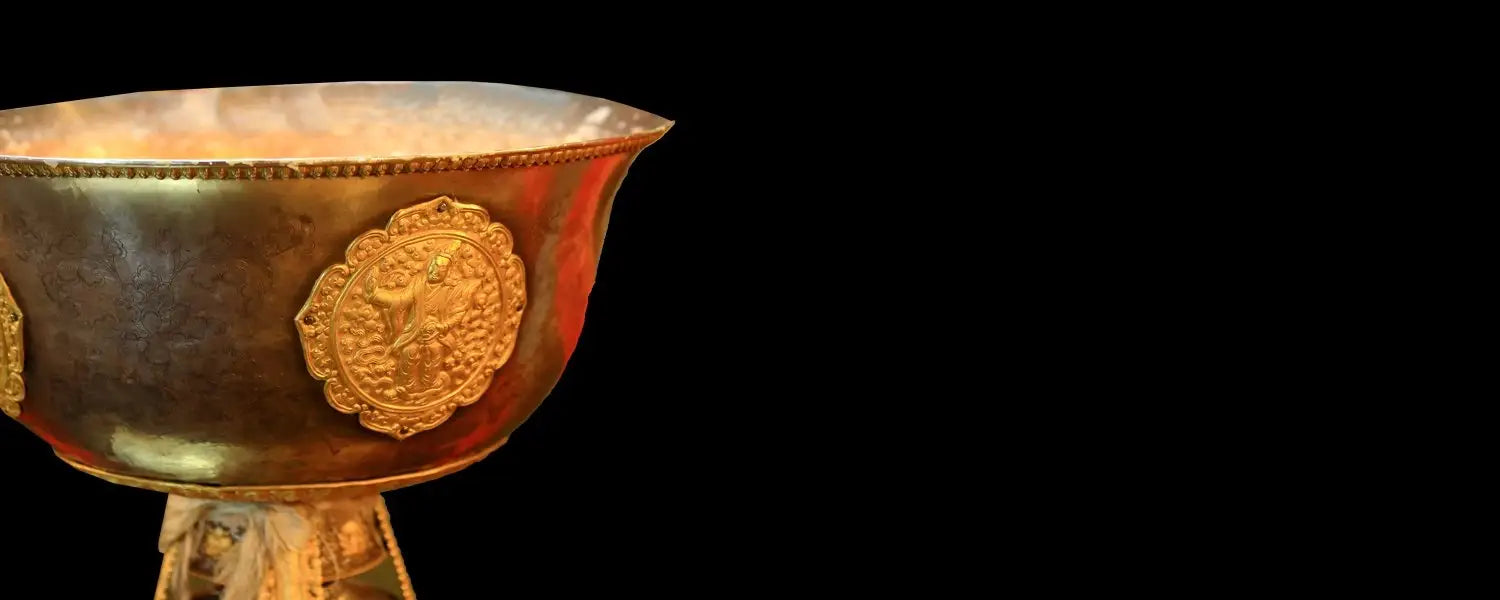Bumpa: the Urn of Wisdom, meaning of this Buddhist symbol
The treasure vase (Skt. nidhana kumbha; Tib. gter gyi bum pa) is a fat-bellied vase with a short, thin neck, topped with a large jewel.

What is Bumpa?
Its symbolic meaning has almost always been associated with ideas of storage and the satisfaction of material desires. In the sagas and fairy tales of many different cultures, for example, there is the recurring idea of an inexhaustible container.
Physically, the "vase of inexhaustible treasures" is modeled on the traditional Indian clay water pot or kumbha with a flat base, round body, narrow neck and fluted upper edge. Whatever quantity is withdrawn from it, this vessel remains perpetually full.
Vessels of wealth, sealed with precious and sacred substances, are usually placed on altars and mountain passes, or buried at water springs, where their presence is believed to attract wealth and bring harmony to the the environment. In relation to Buddhism, it specifically means the spiritual abundance of the Buddha, a treasure that did not diminish no matter how much he gave.
The The question of the association of these eight symbols with the real physical body of the Buddha remains. An ancient text called the Heap of Good Fortune Sutra (Aryamangalakutanama-mahayanasutra), addressing the Buddha.
Reverance for you with your head like a protective parasol, with eyes like the precious golden fishes(even today a woman with beautiful eyes is known as 'minakshi', which means with fish eyes),
- With a neck like a precious and adorned vase of good fortune
- With speech as a shell of Dharma which turns right
- With an infinite mind with wisdom like the endless knot
- With an open tongue like the auspicious pink lotus
- With a body that proclaims triumph over the attacking armies of Mara
- With feet that walk on the path of dharma like the auspicious wheel
The urn of wisdom, explanation of the symbol

They are also often drawn on the ground in sprinkled flour or colored powder to welcome visiting religious dignitaries. Indeed, no Tibetan ceremony, whether religious or secular (e.g. a wedding), is complete without a representation of the eight auspicious symbols of Buddhism, which are believed to protect the environment and business activity.










































1 comment
Aka Lahui
Je suis très heureux de rencontrer cette page enseignant le Bouddhisme !!!